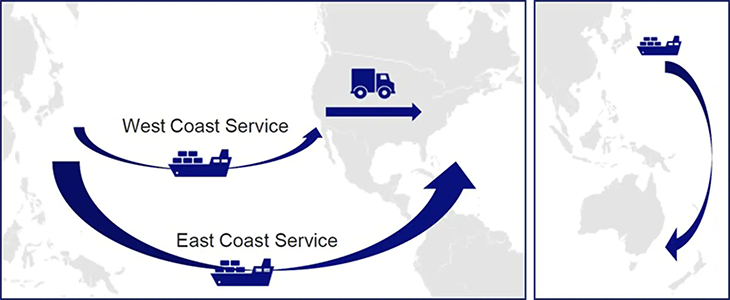| Top Priority |
|
|---|---|
| High Priority |
|
| Others |
|
Focus Area 5Carbon Neutral Society and Circular Economy
The Future That We Envision
Pursuing net-zero greenhouse gas emissions including supply chains by 2040
through collaboration with customers and suppliers
Within the Olympus Group corporate philosophy of “Making people’s lives healthier, safer and more fulfilling,” we believe that a flourishing global environment and the workings of nature are essential. As a corporate group that engages in business globally, we see climate change and measures for achieving a circular economy as urgent social issues that must be addressed with priority, and we have positioned contribution to the achievement of a Carbon Neutral Society and Circular Economy as a focus area under our ESG strategy. We are undertaking environmental preservation not only within the Company, but also throughout the entire supply chain, in collaboration with customers and suppliers, with the objective of achieving of a carbon neutral and sustainable society and a circular economy.
- Materiality Topics
WhyWhy are we taking these actions?
Actively solving environmental issues with the aim of making people’s lives healthier, safer and more fulfilling
Olympus Perspective 1: Increasingly Serious Environmental Issues
Shifting to carbon neutral and circular economy is an urgent issue

The Olympus Group established the Olympus Group Environmental Charter (Environmental Health and Safety Policy) in 1992, expressly stating our stance as a corporate citizen on proactively undertaking environmental measures to solve environmental issues. Since then, we have implemented energy-saving and resource-saving activities at our facilities, developed environmentally conscious products, implemented green procurement in collaboration with suppliers, and carried out other measures to reduce environment impact throughout product lifecycles.
When looking at the world as a whole, however, one-way economic activities that entail high-volume production and consumption is leading to a variety of increasingly serious problems including increasing natural disasters due to climate change, depletion of natural resources, and the accumulation of marine plastic due to improper disposal of waste. These problems threaten the entire global environment and have a major impact on the company’s business activities, and consequently, shifting to carbon neutral and circular economy is a pressing matter. As a global MedTech company, the Olympus Group believes that it is necessary to continuously take on the challenges of achieving the goals of international society at the earliest possible time.
Olympus Perspective 2: The Greening of Healthcare Institutions
The Need to Achieve a Carbon Neutral Society and Circular Economy in Healthcare Settings
For the medical institutions that are Olympus Group customers, the importance of measures for achieving a carbon neutral society and circular economy is increasing year by year. It is said that more than 4.4% of global greenhouse gas emissions are from the healthcare industry.* In addition, many medical devices and packages are single-use (disposable) from the perspectives of patient safety and hygiene, and the massive volumes of waste that are generated as a result are a major issue for the healthcare industry.
As reducing environmental impact becomes a critical issue for medical institutions, the Olympus Group believes that it can contribute to the sustainable provision of medical services by working to address the difficult issue of achieving a balance between patient safety and environmental friendliness.
*HCWH・ARUP「HEALTH CARE’S CLIMATE FOOTPRINT」
HowHow will we achieve this?
Taking effective measures to realize a greener planet by collaborating with customers and suppliers
Approach 1: Reduce Greenhouse Gas Emissions in Our Own Business Activities
Achieving carbon neutrality at our own business sites by making continuous
improvements in manufacturing and switching to renewable energy

To create a decarbonized society, the Olympus Group sets a target of reducing greenhouse gas emissions from our site operations (Scope 1 and 21) to achieve carbon neutrality2 by 2030. To achieve this target, we will continue our prior efforts to improve manufacturing, save energy, shift company-owned vehicles to environmentally conscious cars, and so on while switching to electric power derived from renewable energy at business sites in stages and accelerating reductions in greenhouse gas emissions.
1Scope 1: Direct greenhouse gas emissions by combustion of fuels in our sites.
Scope 2: Indirect greenhouse gas emissions from our sites use of electricity, heat or steam supplied by other companies.
2Carbon neutrality refers to reducing greenhouse gas emissions from site operations (Scope 1 and 2) and offset an amount equivalent to the remaining greenhouse gas emissions using carbon offsets, thereby achieving zero emissions overall.
Approach 2: Reduce Greenhouse Gas Emissions Throughout the Supply Chain
Working with business partners to achieve net zero greenhouse gas emissions throughout the entire supply chain
Approximately 90% of our total greenhouse gas emissions (Scope 1, 2, and 3) including Group business activities and supply chains are emissions generated in the supply chain other than at our own business sites (Scope 31). Of this amount, purchased goods and services, capital goods, and upstream transportation and distribution make up a substantial proportion. To achieve the target, set in 2023, of reaching net zero greenhouse gas emissions throughout the entire supply chain (Scope 1, 2, and 3) by 20402, we will reinforce collaboration with business partners even further. The Olympus Group has been promoting consideration for the environment as a part of the requests that we make to suppliers. In addition, we have requested that suppliers determine their greenhouse gas emissions, set reduction targets in line with the 1.5°C target of the Paris Agreement, and cooperate with our reduction measures.
Furthermore, we are making improvements in loading efficiency, adopting direct delivery of products,selecting transportation modes with lower greenhouse gas emissions, and implementing other measures in product transportation and distribution.
*1 Scope 3: Other indirect greenhouse gas emissions excluding Scope 1 and 2.
2 Net zero means reducing greenhouse gas emissions (Scope 1, 2, and 3) as much as possible (at least 90%) in line with the latest climate science (1.5°C scenario) and using credits derived from carbon sequestration and removal (such as afforestation and CO2 capture and storage) for an amount equivalent to the residual greenhouse gas emissions (less than 10%) to achieve a balance.

Cutting greenhouse gas emissions in product transportation by changing transportation modes from aircraft to ships (modal shift)
Approach 3: Reduce the Environmental Impact of Products
Promoting environmentally conscious designs based on the environmental impact characteristics of each product

The Olympus Group conducts life cycle assessments (LCA) to determine a product’s impact on the environment at each stage of its life cycle from procurement to manufacturing, distribution, use, and final disposal. Based on the results of these assessments, we established the Eco-Products Administration Rules, a voluntary standard relating to environmental consideration in relation to products, and products that satisfy certain standards are certified as Olympus Eco-Products.
We are also working to reduce the amount of containers and packaging materials used and promoting effective use of resources. In addition, we have started investigating the development of a mechanism for the recovery and recycling of single-use products that takes into consideration laws and regulations as well as safety.
WhatWhat specifically will we do?
Initiative Example 1: Measures to reduce greenhouse gas emissions implemented by Aizu Olympus

Aizu Olympus, which performs development and production of medical endoscopes and provides service-related technical support, actively implemented measures to reduce greenhouse gas emissions in response to opinions voiced by employees when reconstructing the building in 2009. The company installed an air conditioning system that uses air kept at a constant temperature underground, installed solar panels, and took other measures. The company also focuses on grassroots-level measures for reducing greenhouse gas emissions by raising the awareness of environmental activities of each employee.

